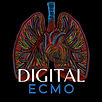Understanding the Oxygenation Index and Its Role in VV ECMO Candidacy Determination
- Nathan Stewart BSN, RN, CCRN
- Jul 15, 2024
- 3 min read

In the realm of critical care, assessing the severity of respiratory failure is paramount to determining the appropriate interventions for patients. One vital metric used to evaluate this severity is the Oxygenation Index (OI). This index plays a crucial role in the selection process for Venovenous Extracorporeal Membrane Oxygenation (VV ECMO) candidacy, a life-saving therapy for patients with severe respiratory failure. Let's delve into what the Oxygenation Index is, how it is calculated, and its significance in determining VV ECMO candidacy.
What is the Oxygenation Index?
The Oxygenation Index is a calculation used to quantify the degree of hypoxemia (low levels of oxygen in the blood) in patients with respiratory failure. It provides a measure of the efficiency of oxygenation in relation to the amount of ventilatory support being provided. The formula for the Oxygenation Index is:

Where:
- FiO2 (Fraction of Inspired Oxygen): The percentage of oxygen delivered to the patient.
- MAP (Mean Airway Pressure): The average pressure applied to the airways during the respiratory cycle.
- PaO2 (Partial Pressure of Oxygen in Arterial Blood): The amount of oxygen dissolved in the arterial blood, measured in mmHg.
Significance of the Oxygenation Index
The Oxygenation Index provides a more comprehensive assessment of respiratory function compared to simpler metrics like the PaO2/FiO2 ratio. It accounts for the level of ventilatory support required to achieve a given PaO2, offering a better gauge of the patient's oxygenation status and the severity of lung dysfunction.
Role in VV ECMO Candidacy
VV ECMO is a critical intervention for patients with severe acute respiratory distress syndrome (ARDS) or other forms of respiratory failure that do not respond to conventional treatments. The Oxygenation Index plays a pivotal role in determining which patients are candidates for VV ECMO.
1. Threshold for VV ECMO Consideration:
- An OI greater than 25 is generally considered an indicator of severe respiratory failure and a potential criterion for VV ECMO consideration. This threshold suggests that despite high levels of ventilatory support, the patient's oxygenation remains critically low.
- Some guidelines may use an OI greater than 40 as a more stringent criterion, indicating even more severe hypoxemia and higher urgency for ECMO support.
2. Assessment Over Time:
- The trend of the Oxygenation Index over time is also important. A persistently high or worsening OI despite optimal ventilatory management and adjunctive therapies indicates a poor prognosis and the need for ECMO intervention.
- Conversely, an improving OI may suggest that the patient is responding to conventional therapies, potentially delaying or avoiding the need for ECMO.
3. Complementary Clinical Factors:
- While the OI is a critical metric, it is not used in isolation. Clinical judgment, patient comorbidities, underlying causes of respiratory failure, and the overall clinical picture are also considered in making ECMO candidacy decisions.
- Other indicators, such as the presence of hypercapnia (elevated CO2 levels) and the PaO2/FiO2 ratio, are also taken into account.
Conclusion
The Oxygenation Index is a vital tool in the assessment of patients with severe respiratory failure. Its role in determining VV ECMO candidacy underscores its importance in critical care. By providing a quantitative measure of hypoxemia in the context of ventilatory support, the OI helps guide clinical decisions and ensures that patients who are unlikely to improve with conventional therapies receive timely and appropriate intervention with VV ECMO.
References
- Extracorporeal Life Support Organization (ELSO). (n.d.). Guidelines for ECMO. Retrieved from [ELSO](https://www.elso.org)
- Critical Care Medicine. (n.d.). Oxygenation Index and ECMO. Retrieved from [Critical Care Medicine](https://ccforum.biomedcentral.com)
- American Journal of Respiratory and Critical Care Medicine. (n.d.). Oxygenation Index in ARDS. Retrieved from [AJRCCM](https://www.atsjournals.org)

Comments